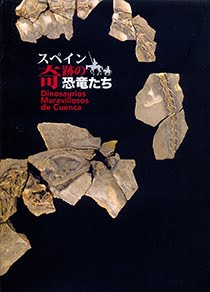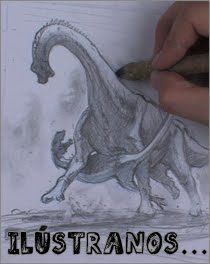"En un país multicolor
nació una abeja bajo el sol
y fue famosa en el lugar
por su alegría y su bondad"
Estrofa que parece que era cantada y silbada ya en el Cretácico medio por los parientes de los abejorros carpinteros como Xylocopa violacea. Creo que la mayor parte de nosotros lo habrá visto y, oído el zumbido de su vuelo cuando la primavera ya está establecida. Y os preguntaréis… ¿abejas en el Cuaderno de Godzillín? Es verdad, están un poco alejadas filogenéticamente de los «lagartos terribles» & Co. No obstante, es curioso ver que ya al final del Mesozoico este grupo de abejas sufrieron lo mismo que parece que está pasando con las abejas de la miel (Apis mellifera): una importante crisis de diversidad. De esto trata las investigaciones expuestas en un reciente trabajo publicado en la revista científica PLoS ONE y en el que los distintos eventos que se produjeron al final del Cretácico parece que no sólo afectaron drásticamente a los dinosaurios no aviarios, también fueron duros para las relaciones entre insectos polarizadores y las plantas con flores.
¿Algo pasa con Maya? Con ella ahora pero con sus parientes hace unos 65 millones de años… ¡Cuánto tiempo!
El resumen del trabajo es el siguiente:
Bees and eudicot plants both arose in the mid-late Cretaceous, and their co-evolutionary relationships have often been assumed as an important element in the rise of flowering plants. Given the near-complete dependence of bees on eudicots we would expect that major extinction events affecting the latter would have also impacted bees. However, given the very patchy distribution of bees in the fossil record, identifying any such extinctions using fossils is very problematic. Here we use molecular phylogenetic analyses to show that one bee group, the Xylocopinae, originated in the mid-Cretaceous, coinciding with the early radiation of the eudicots. Lineage through time analyses for this bee subfamily show very early diversification, followed by a long period of seemingly no radiation and then followed by rapid diversification in each of the four constituent tribes. These patterns are consistent with both a long-fuse model of radiation and a massive extinction event close to the K-T boundary. We argue that massive extinction is much more plausible than a long fuse, given the historical biogeography of these bees and the diversity of ecological niches that they occupy. Our results suggest that events near the K-T boundary would have disrupted many plant-bee relationships, with major consequences for the subsequent evolution of eudicots and their pollinators.
--Imagen tomada de aquí.
--Referencia: Sandra M. Rehan, Remko Leys & Michael P. Schwarz (2013): First Evidence for a Massive Extinction Event Affecting Bees Close to the K-T Boundary. PLoS ONE 8(10): e76683. DOI: 10.1371/journal.pone.0076683.




























No hay comentarios:
Publicar un comentario